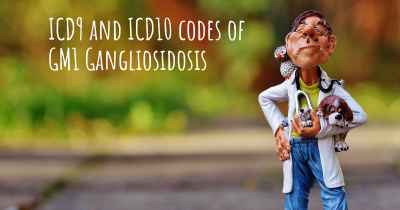Can people with GM1 Gangliosidosis work? What kind of work can they perform?
See how people with experience in GM1 Gangliosidosis give their opinion about whether people with GM1 Gangliosidosis can work and what kind of jobs are more appropriated for people with GM1 Gangliosidosis

Can people with GM1 Gangliosidosis work?
GM1 Gangliosidosis is a rare genetic disorder that affects the nervous system. It is caused by a deficiency of an enzyme called beta-galactosidase, which leads to the accumulation of a fatty substance called GM1 ganglioside in the body's cells. This build-up of GM1 ganglioside can cause progressive damage to the brain and spinal cord, resulting in a wide range of symptoms.
Given the progressive nature of GM1 Gangliosidosis and the impact it has on the nervous system, individuals with this condition often face significant challenges in their daily lives. The severity of symptoms can vary widely, ranging from mild to severe, and the progression of the disease can be unpredictable.
What kind of work can they perform?
Due to the debilitating nature of GM1 Gangliosidosis, individuals with this condition may find it difficult to engage in traditional forms of employment. The symptoms of GM1 Gangliosidosis can include developmental delays, muscle weakness, seizures, impaired motor skills, and cognitive impairment. These symptoms can significantly impact an individual's ability to perform tasks required for most jobs.
However, it is important to note that the abilities and limitations of individuals with GM1 Gangliosidosis can vary greatly depending on the severity of their condition and the specific symptoms they experience. Some individuals with milder forms of the disease may be able to engage in certain types of work, while those with more severe symptoms may require significant support and assistance.
For individuals with milder symptoms:
Individuals with milder forms of GM1 Gangliosidosis may have better motor skills, cognitive abilities, and overall functionality. They may be able to perform certain types of work that are less physically demanding and require minimal cognitive processing. Examples of such work may include:
- Simple administrative tasks: Individuals with milder symptoms may be able to handle basic administrative tasks such as data entry, filing, or organizing documents.
- Customer service: Some individuals may have good communication skills and be able to work in customer service roles that involve interacting with customers, answering inquiries, or providing basic assistance.
- Light manual labor: Depending on their physical abilities, individuals with milder symptoms may be able to perform light manual labor tasks such as packaging, sorting, or assembling products.
For individuals with more severe symptoms:
Individuals with more severe forms of GM1 Gangliosidosis may require more extensive support and assistance in their daily lives. Their symptoms may significantly limit their ability to engage in traditional employment. However, there are still opportunities for them to contribute and be a part of the workforce. Some options include:
- Supported employment programs: These programs provide individuals with disabilities, including those with GM1 Gangliosidosis, with job training and support. They aim to match individuals with suitable work tasks and provide ongoing assistance to ensure their success in the workplace.
- Sheltered workshops: These are work environments specifically designed for individuals with disabilities. They offer a range of tasks that can be tailored to the abilities and limitations of each individual. These workshops provide a supportive and inclusive work environment.
- Volunteer work: Individuals with GM1 Gangliosidosis may find fulfillment and purpose in engaging in volunteer work. This allows them to contribute to their community and gain a sense of accomplishment while working within their capabilities.
Conclusion
GM1 Gangliosidosis is a complex and debilitating condition that can significantly impact an individual's ability to work. The severity of symptoms and the progression of the disease can vary greatly among individuals. While individuals with milder symptoms may be able to perform certain types of work, those with more severe symptoms may require extensive support and assistance. It is important to consider the specific abilities and limitations of each individual when determining suitable work options. Programs and initiatives that provide job training, support, and inclusive work environments can play a crucial role in enabling individuals with GM1 Gangliosidosis to participate in meaningful work.








